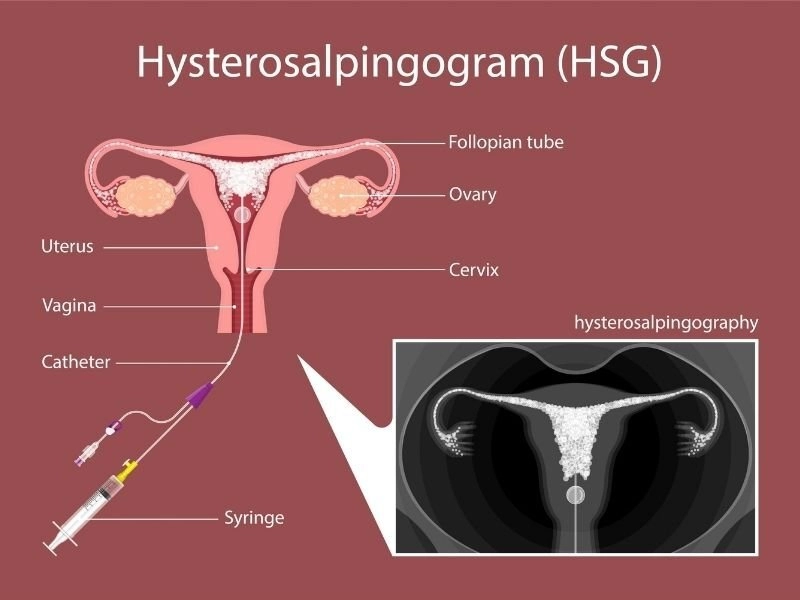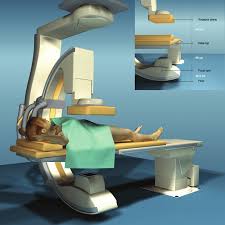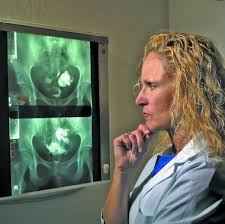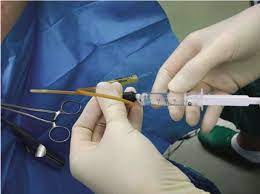As a woman trying to conceive, you are probably aware that many parts of your body must work properly in order to conceive.
Ovaries must produce an egg every month, your uterus must be in good working order, and your Fallopian tubes must be open.
There might be trouble conceiving if any of these vital components are not working properly.
A blocked fallopian tubes will not allow the sperm to reach the egg.
Fallopian tubes blockage can occur for a variety of reasons, but health care providers will run some tests to determine the cause.
These tests can reveal a lot about fertility and the best next steps.
This article will be discussing three ways to diagnose tubal blockage, what to expect during and after the tests, as well as how to treat it.
Hysterosalpingogram (HSG)

A hysterosalpingogram is an X-ray procedure that looks for any blockages or scarring in the Fallopian tubes and uterus that could prevent conception.
An infection such as pelvic inflammatory disease, abdominal surgery, or a condition such as endometriosis, uterine fibroid, or Asherman’s syndrome can cause blockages.
Despite the fact that HSG helps to detect a possible cause of infertility, some research suggest that the test itself may be able to improve fertility by flushing out blockages in the Fallopian tubes.
HSG is the most common of all the tests, that is why most doctors only use the test to diagnose patients.
When is the best time to do HSG test?

You should ideally get an HSG test after your period ends, but before ovulation occurs (between days 6 and 12 of your menstrual cycle).
How to prepare for HSG test

HSG tests can cause painful cramping so many women choose to take an over-the-counter pain reliever an hour before the test.
Just make sure you get permission from your doctor first. Some women also take a prescribed course of antibiotics before an HSG test to reduce the risk of infection.
If the doctor prescribes antibiotics, take them exactly as directed before the procedure.
Finally, see if you can get a ride home because it is always a good idea to have some extra help!
How is HSG done?

You will begin by lying down on a table beneath a fluoroscope, which is an X-ray imager.
A speculum is used to keep the vagina open while cleaning the cervix. After removing the speculum, there will be insertion of cannula into the cervix.
There will also be a filling of an iodine-laced liquid in the uterus. On X-rays, the iodine contrasts with the uterus and Fallopian tubes.
Finally, the doctor will take images with the fluoroscope X-ray.
The contrasting liquid will show the outline of the uterus and fallopian tubes and how the fluid moves through them.
What are the risks?

HSG tests are common, and complications are rare. Difficulties may occur if there is an allergy reaction to the pigment.
It is also possible to get a pelvic infection or a uterine injury. If you have any of the following symptoms, call your doctor right away:
- Vaginal discharge that smells unpleasant
- Fainting
- Severe pain in your abdomen
- Nausea
- Vomiting
- Fever
There will be notification of some blood-tinged discharge as the fluid used during the procedure flows out of your uterus,
Use pad to absorb the discharge, but avoid using tampons (or have sex) until your practitioner says it’s okay.
What does HSG test result mean?

HSG test results can help figure out if there is a blockage in the Fallopian tube or uterus. This could make it more difficult for sperm to reach and fertilize an egg.
It also helps look at the shape of uterus, which affects fertility as well.
Normal HSG test results
HSG test results are normal if the liquid dye flows through Fallopian tubes and spills out, indicating that there aren’t any blockages.
Abnormal HSG test results
HSG test results are abnormal if the liquid dye encounters a blockage in one of the Fallopian tubes or uterus.
Sonohysterography

Sonohysterography is a procedure to look at the inside of the uterus. It’s a safe, painless test that uses sound waves and a computer to create images. It does not use radiation.
During sonohysterography, you will be awake and lying down with your knees bent. A slim wand which is an ultrasound transducer will be in your vagina. The wand is covered with a disposable sheath and coated with a special gel.
How is Sonohysterography Done?
Your healthcare provider will insert a catheter into the cervix for sending a salty fluid (saline) into the uterus. At the same time, the transducer sends high-frequency sound waves through the gel and into the body.
The echoes from these sound waves can create a real-time image of the inside of the uterus. This can show the structure of the uterus. The saline fluid helps the ultrasound form an image with sharper detail. Healthcare provider can use this information to diagnose a number of different health conditions.
You might need this test if a standard ultrasound test doesn’t show enough information to diagnose a problem.
Chromotubation

Chromotubation is a medical procedure where there is an injection of blue dye solution into the Fallopian tubes to determine if there are any blockages.
How to do Chromotubation
Insertion of a camera-equipped surgical device into the abdominal cavity through a small incision typically just under the belly button, so that doctors can see the Fallopian tubes.
Before inserting the laparoscope, a device called a uterine manipulator is placed through the vagina and cervix into the uterus.
A dye can then be injected through this catheter into the uterus, and the tubes are observed with the laparoscope camera to see if the dye comes out the other end of the tube.
If the dye does come out, it means there is no blockage, but if the dye does not come out, it suggests that there is some kind of blockage, such as scarring or endometriosis.
Effect of Tubal Surgery
In some cases, surgery may help clear the blockage and improve chances for conceiving.
Whatever type of tubal surgery you opt for, it increases the risk of scar tissues and adhesion.
Surgical procedures also add to the risk of pelvic infection, more scarring, ectopic pregnancy, and much more negative aftereffect associated with these procedures.
In other cases, particularly if there is damage or scarring to the Fallopian tubes, in vitro fertilization (IVF) may be recommended for a blocked Fallopian tube.
Despite being safe with fewer side effects, IVF is not as successful as experts expect it to be.
Moreover, IVF is a costly solution to avoid blocked Fallopian tube and it may cost up to thousands of dollars without guaranteed coverage of fertility treatment.
There are natural options to unblock your Fallopian tube which are 100% risk free and give better success pregnancy rate. It is called Tubal Blockage Remedy Kit
If you have a blocked Fallopian tube and you want to get it treated right away to improve your chances of conceiving naturally. Feel free to contact us to order for Tubal Blockage Remedy Kit
Our Tubal Blockage Remedy Kit at Plan B Wellness Limited would unblock the Fallopian tubes naturally without the need for surgery.
Click here to see some testimonials and feedback.
Plan B Wellness
WhatsApp: +2348099666658, +2348099666648
Call: +2348099666650
Email: consult@www.tubalblockageremedy.com.ng
Instagram: @tubalblockageremedy







